DO NOT TOUCH THIS PLANT!
*Prohibited in Michigan
Giant Hogweed is a Federally listed noxious weed. Its sap, in combination with moisture and sunlight, can cause severe skin and eye irritation, painful blistering, permanent scarring and blindness. Contact between the skin and the sap of this plant occurs either through brushing against the bristles on the stem or breaking the stem or leaves.
Identification of Giant Hogweed
Giant hogweed is a biennial or perennial herb in the carrot family (Apiaceae) which can grow to 14 feet or more. Its hollow, ridged stems grow 2-4 inches in diameter and have dark reddish-purple blotches. Its large compound leaves can grow up to 5 feet wide. Its white flower heads can grow up to 2 1/2 feet in diameter. Please refer to the Giant Hogweed Identification section below for further help.
Giant hogweed grows along streams and rivers and in fields, forests, yards and roadsides. It prefers open sites with abundant light and moist soil but it can grow in partially shaded habitats, too.
Giant hogweed is often confused with Cow Parsnip. Here is a side-by-side look at the two plants to help you identify which is which.
Table of Contents
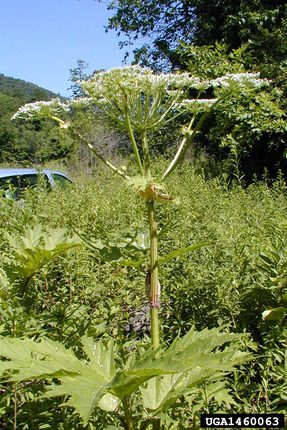
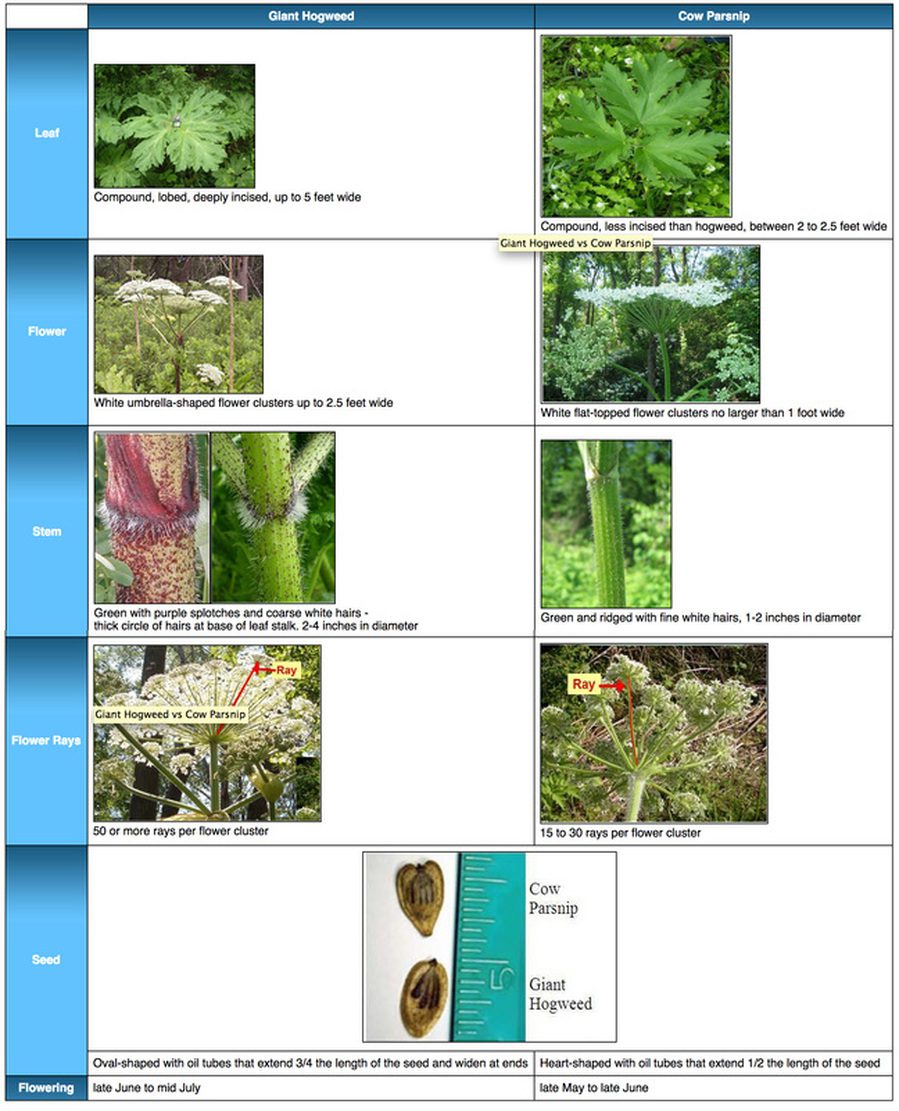

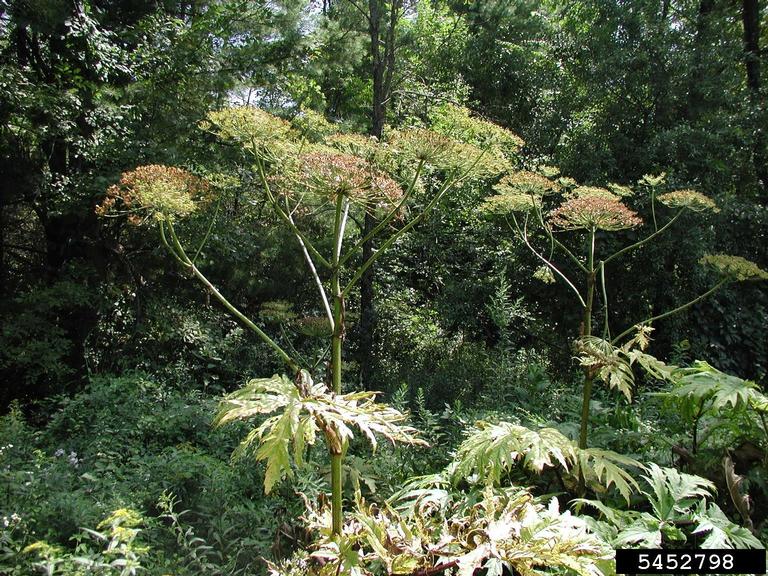
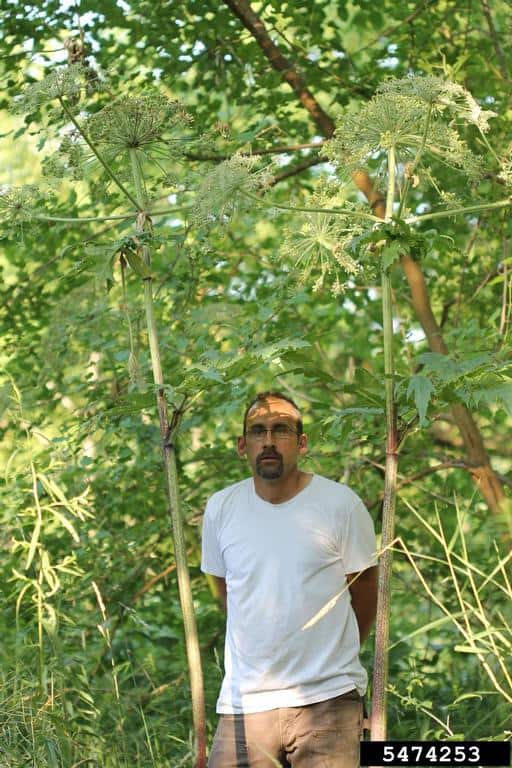
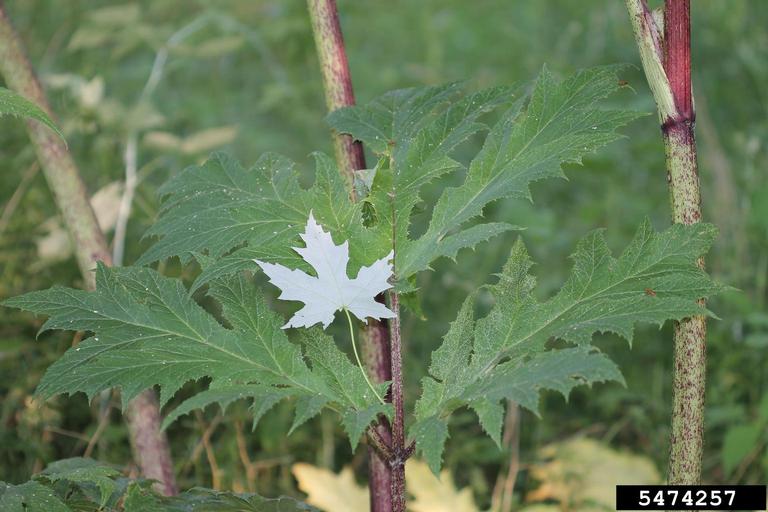
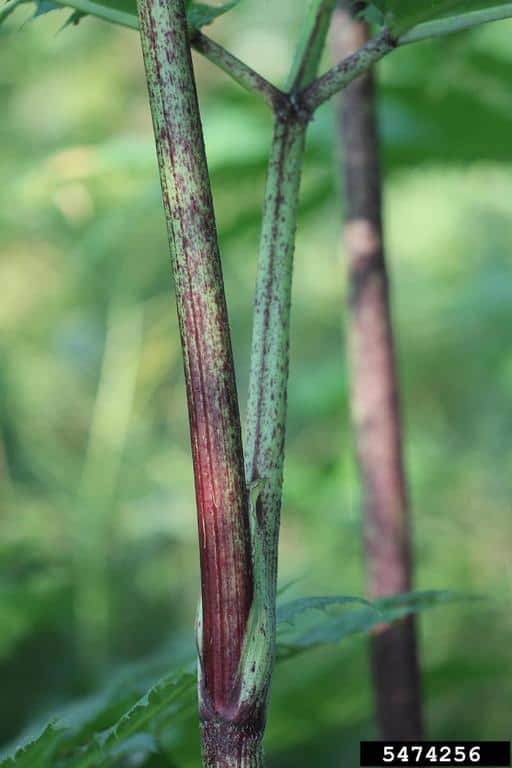
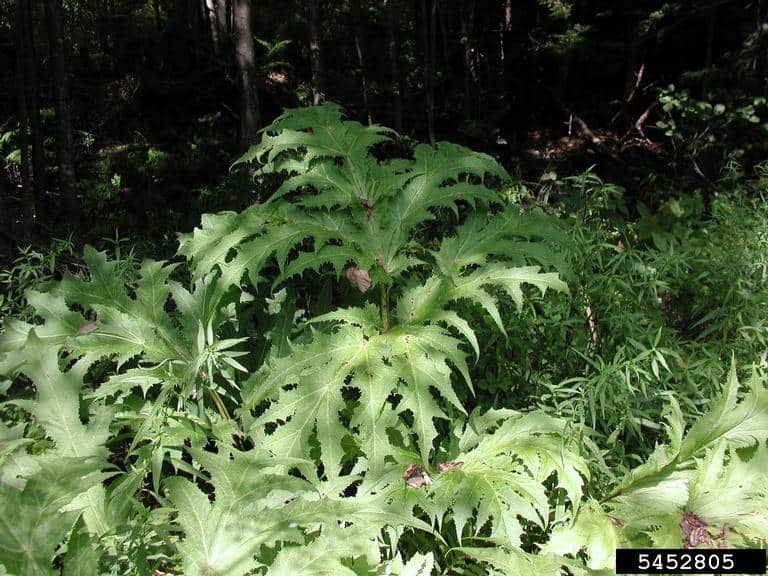
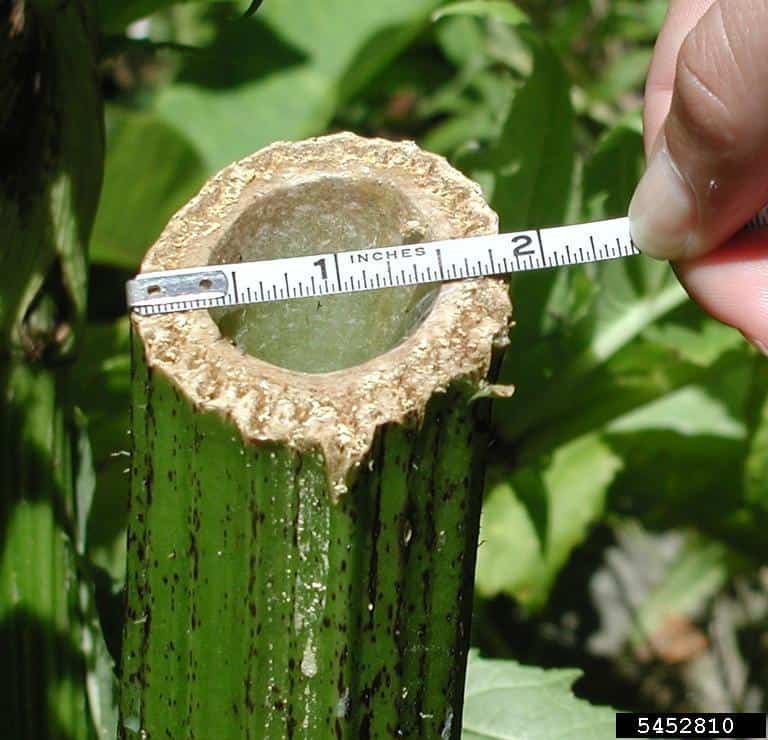
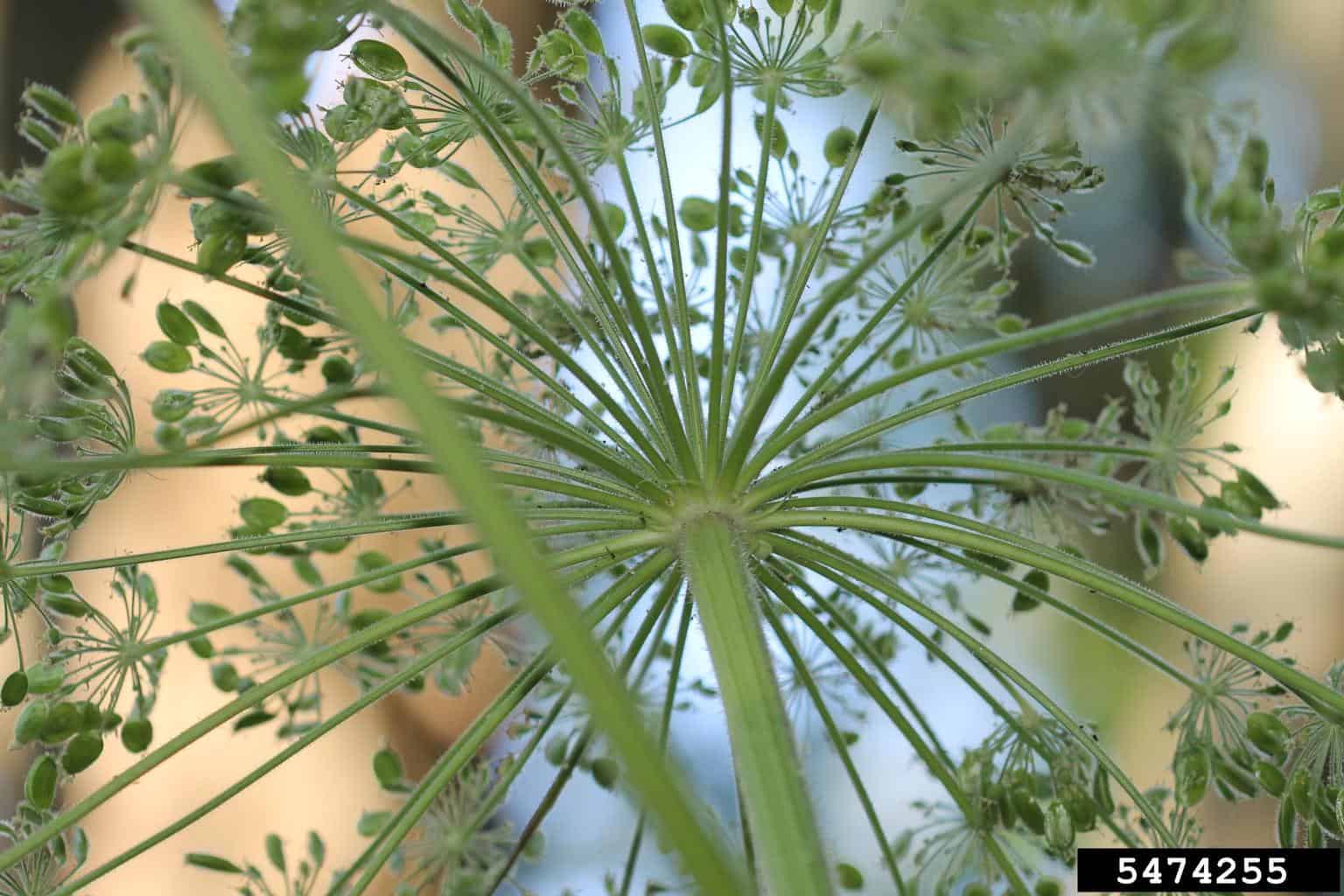
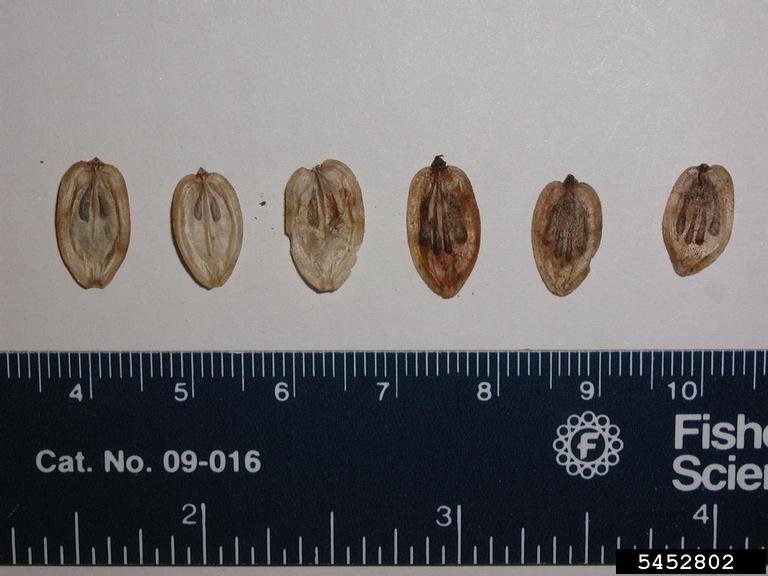
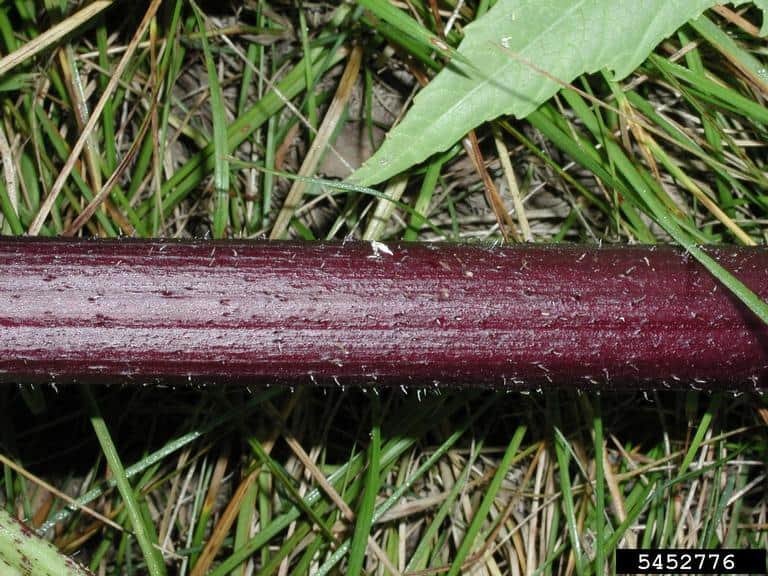
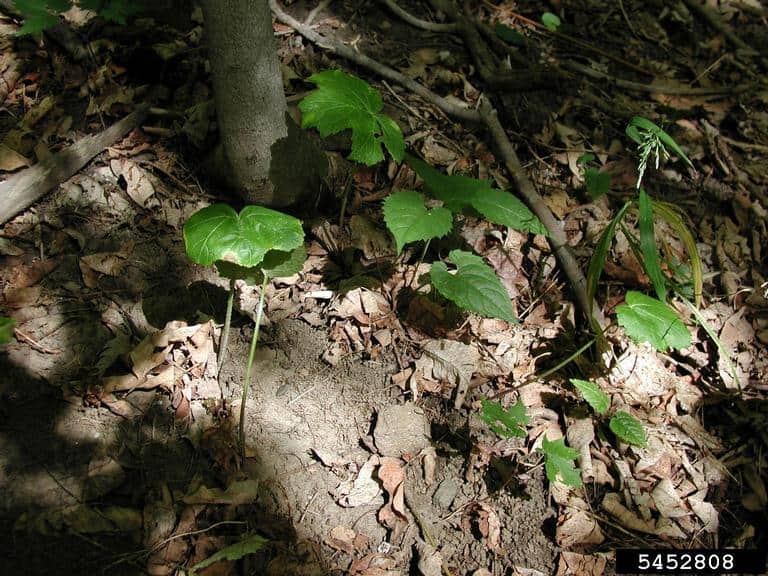
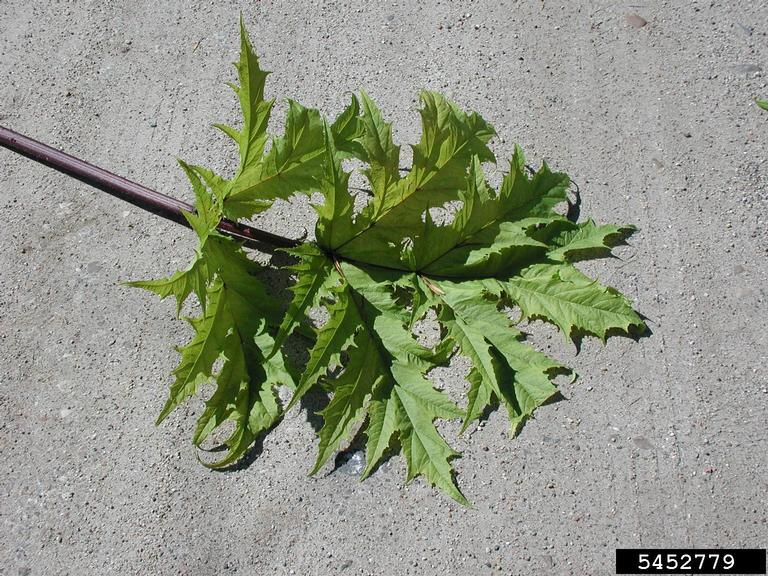
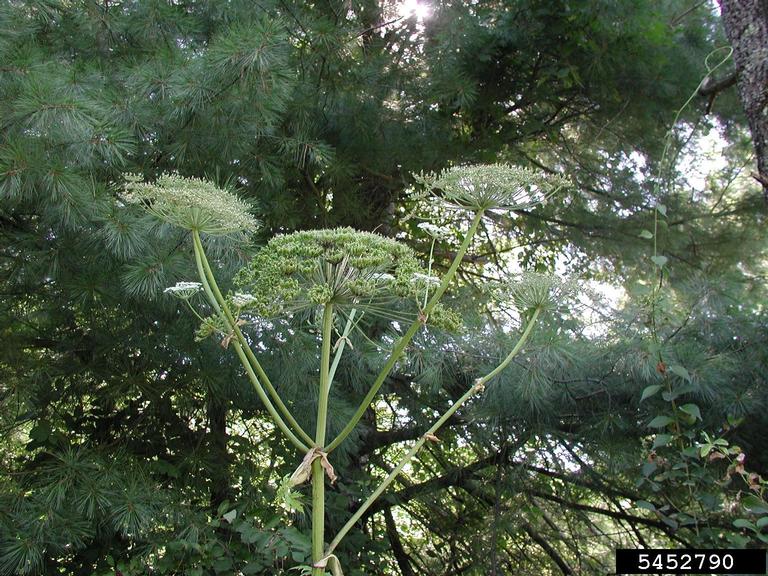
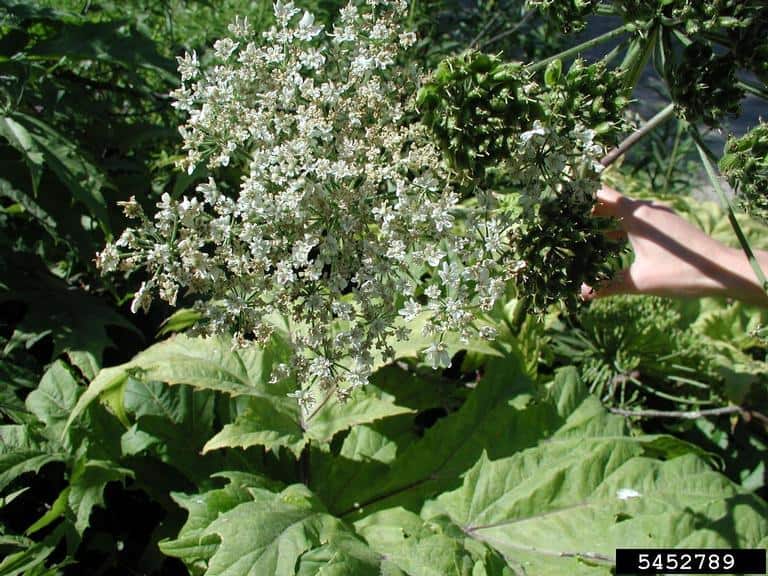
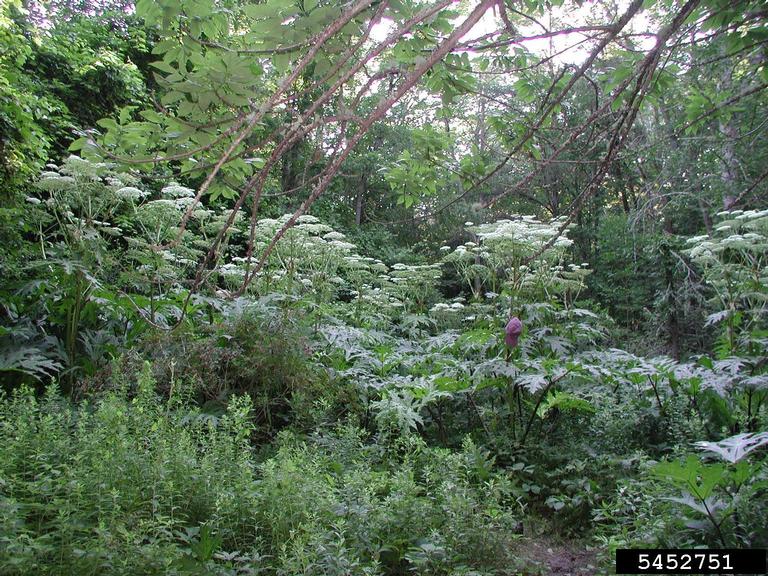
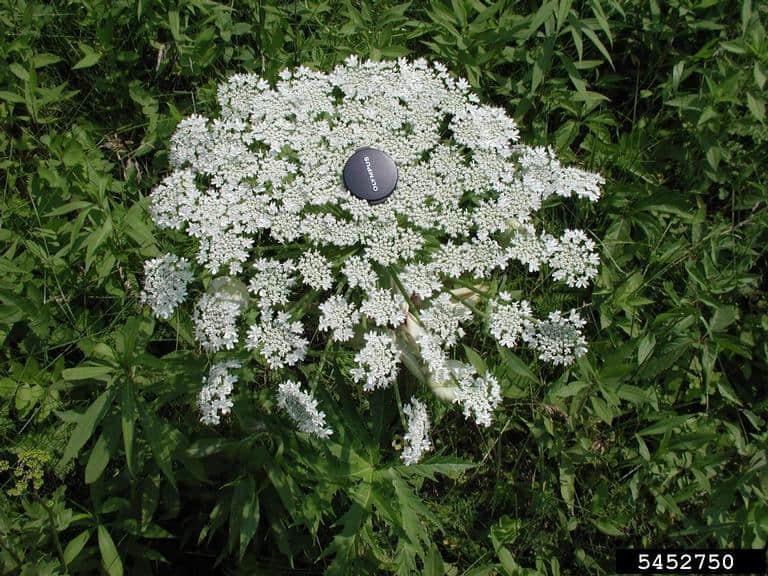
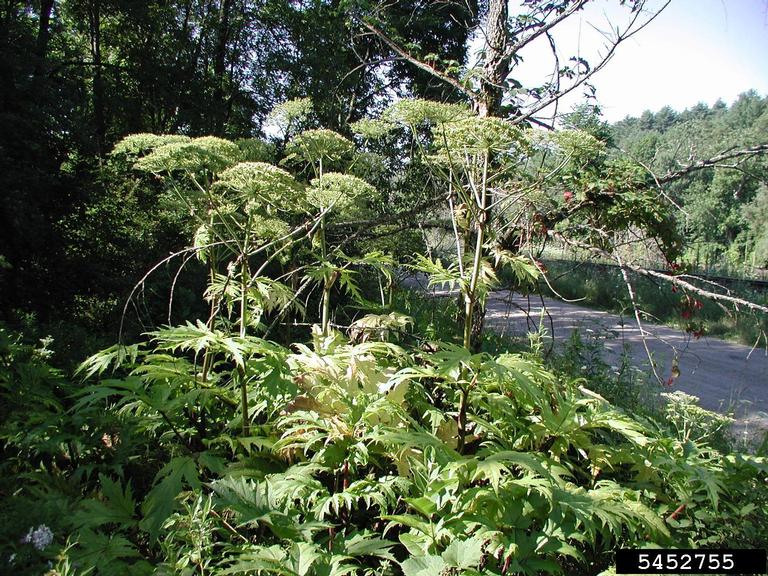
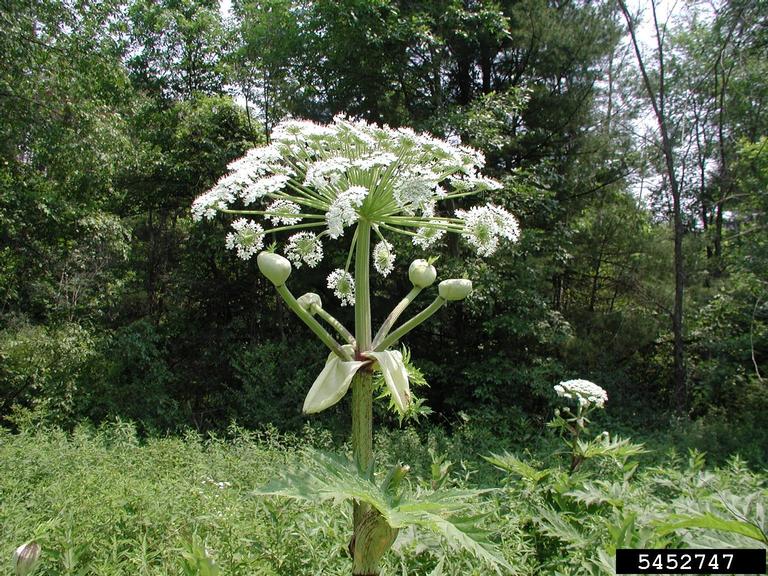
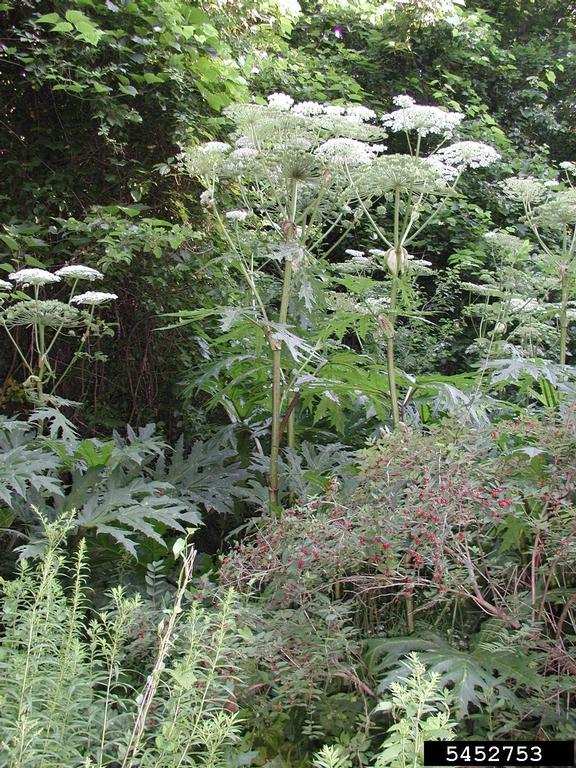
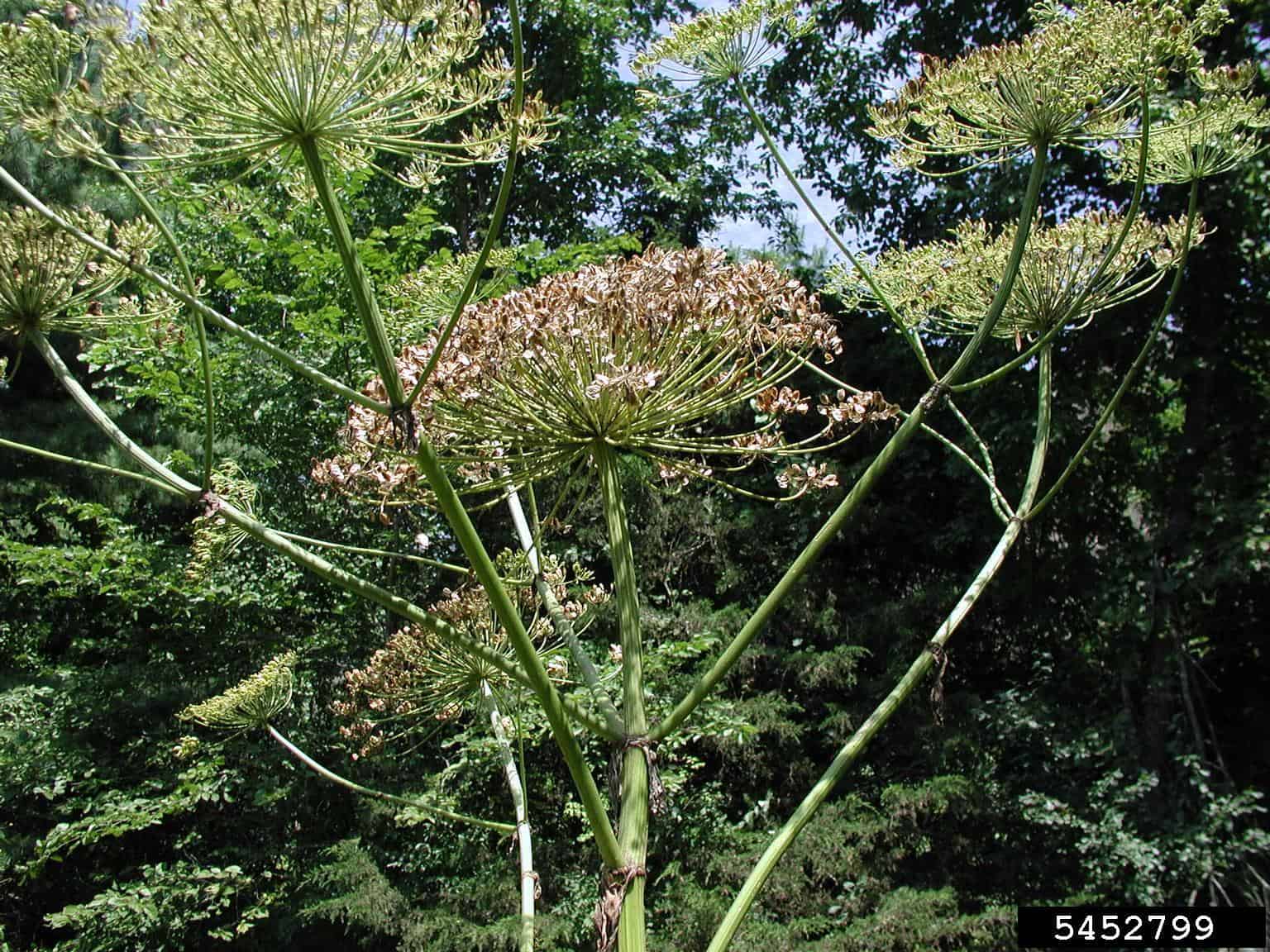
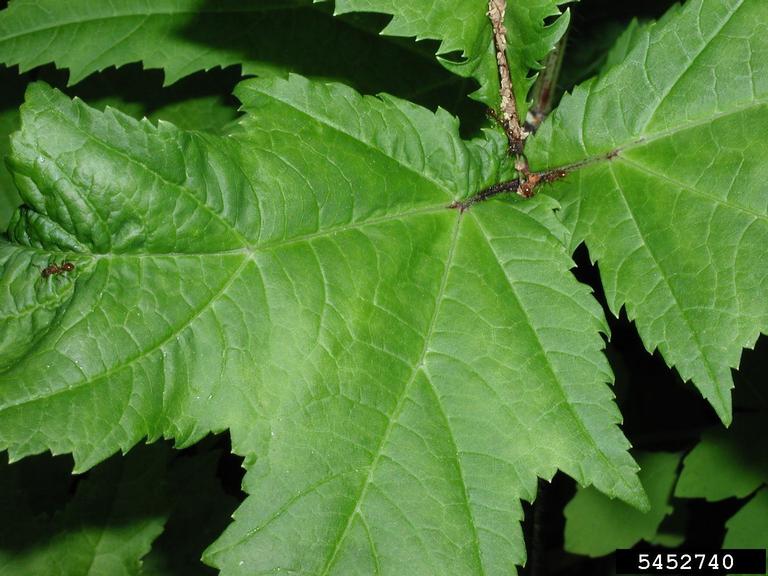
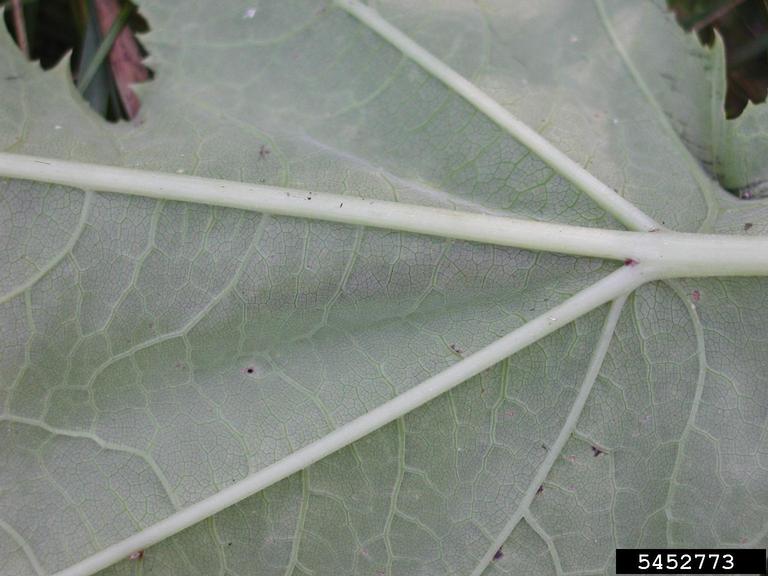
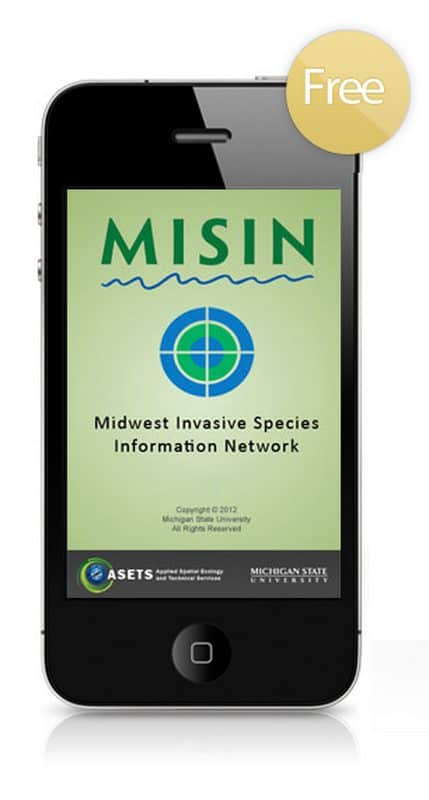
Reporting Invasive Species – FREE APP The MISIN smartphone app provides a mobile solution for the capture of invasive species field observation data. You can play an important role in the early detection and rapid response to new invasive threats in your area by contributing invasive species observations to the MISIN database.
|



